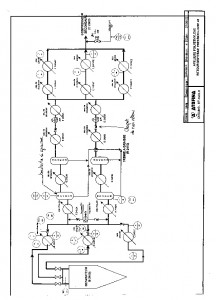A rupture disk in a plastics factory opened on the medium pressure return (MPR) line of a compressor due to a pressure increase on discharge side of the primary compressor, resulting in the release of 3.2 t ethylene into the atmosphere.On 07/10, a leak was detected on a line serving the polyethylene workshop at the level of the filling valve of a grease cylinder (MPR) which had been cooled pending repair. The line was to be shut down August 20th at 4 am for maintenance, and then placed back into service at 6 pm.The operator started the primary compressor according to the normal procedure with automatic monitoring of the rising pressure. The pressure measured at the inlet of the secondary compressor was in excess of 300 bar, even though a valve on the discharge side of the primary compressor should have opened at 284 bar. In addition, the primary compressor should have tripped off automatically (standby) at 270 bar. This did not happen. The operator noted the abnormal increase in pressure and switched to manual mode. The operator’s belated action was unable to prevent the pressure from rising to 310 bar and the rupture of the disk.The primary compressor was unable to stop due to partial clogging of the pressure increase regulating gauge (Pmeasured < Ptrue). The valve malfunction was attributed to a maintenance error: the valve had been replaced by an inappropriate model (Calibration pressure > 310 bar). The fouling of the MPR section resulting from several days of production without being purged of greases accentuated the pressure increase kinetics.The check valve, obstructed by low polymers was cleaned and checked, the safety PLC and the primary compressor’s standby sequence were tested. The rupture disk and valve were replaced. Other measures were also taken: shut-down of the compressor in automatic or manual mode with a fail-safe pressure measurement, review of grease cylinder operating rules to prevent clogging of the MPR, additional training for the personnel, and consideration of this clogging phenomenon in the installation’s danger study.
Download the detailed report in .pdf format (85 Kb)




